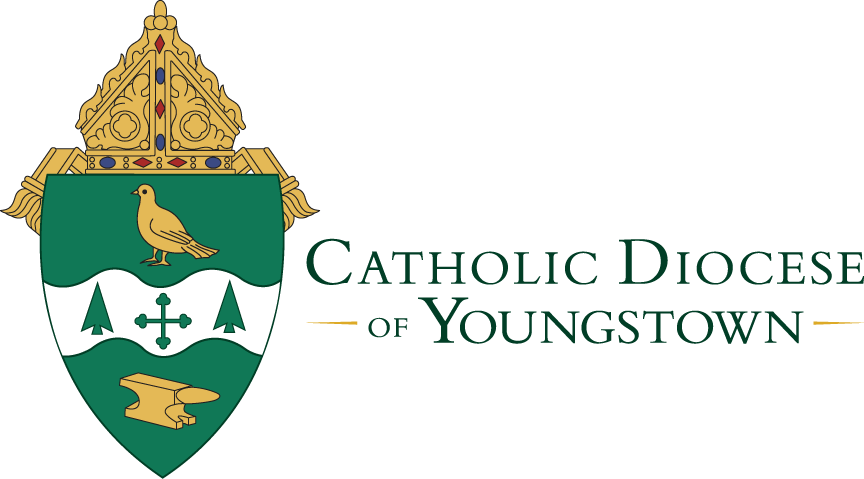October 14, 2022
Photo and article by Marly Reichert, Special to the Exponent
Retirement Fund for Religious co-chair found a home with her religious community early on.
VILLA MARIA, PA – Sister Susanne Gill grew up behind North Canton St. Paul Parish, where she attended elementary school and encountered the Humility of Mary Sisters at a young age.
The sisters who taught her made such an impression, she said, that the prospect of joining their religious community remained with her even as she progressed to high school.
“I never lost contact with the sisters throughout my high school years at North Canton [now Hoover] High School,” Sister Susanne said. “God spoke to me through the influence of these dedicated sisters and through my love for the Eucharist.”
Sister Susanne, 92, is one of two honorary co-chairs for this year’s Retirement Fund for Religious (RFR) appeal. The other is Sister Karen Lindenberger, a member of the Franciscan Sisters of Tiffin, director of Hispanic ministry at Canton St. Anthony/All Saints Parish.
Sister Susanne entered the Humility of Mary Sisters in 1949 and made her final vows in 1955. After joining, she went to St. John’s College in Cleveland and Purdue University, majoring in education. She taught for 15 years in parish schools and was principal at Canton St. John the Baptist for 12 years.
Parish schools where she taught in the Youngstown Diocese included Youngstown St. Brendan, Kent St. Patrick, Ashtabula Our Lady of Mount Carmel, and Canton St. Anthony, as well as teaching religious education at Lake Milton St. Catherine Parish.
In the Cleveland Diocese, she served for 20 years as director of religious education and pastoral minister at Nativity of the Lord Jesus Parish in Akron.
“My parents were happy I wanted to become a nun,” Sister Susanne said. “I always wanted to be a teacher. So I got to do both.”
She completed her novitiate and professed her perpetual vows at the Villa Maria Convent here where she now lives, making her feel she has “come full circle.”
Besides her early association with the Humility of Mary community, Sister Susanne said, she also chose the order because of “their spirituality and love of the Lord.”
“I always had a devotion to the Eucharist like they did and they were good teachers. I also liked the way they always reached out to the community,” she said.
Sister Susanne has lived here since Thanksgiving 2019. Several months after she moved back, the COVID-19 pandemic started and isolated her and her fellow sisters from the outside world – and sometimes from one another.
“It was tough being in a new place and not being able to interact,” Sister Susanne said. “I spent a lot of time walking the grounds here because it’s so beautiful.”
Before that, she lived in her own apartment in Springfield Township, near Akron.
“God has blessed me working with and serving wonderful families, teachers and priests,” she said.
At the Villa, she helps where needed and said she is “well taken care of.”
“Prayer is the main focus of my life and is so needed in our country and the world. I pray too that I can live our HM mission of bringing abundant life to God’s people, that I can bring peace, love and joy to all those I come into contact with every day, and forever be a person of gratitude,” she noted.
One of her favorite ministries besides teaching was giving baptismal instructions to parishioners in their homes, after their babies were born.
“I also love the ministry that I helped start in my later years to visit the sick and homebound and bring them the Eucharist,” Sister Susanne said.
The Retirement Fund for Religious is important, she emphasized, because today’s religious communities lack sufficient money to fund the health care needs and living expenses of their aging members, while also carrying on the various ministries the communities have always provided to the diocesan Church.
For scores of years, religious communities accepted only meager stipends for the dedicated service that their members provided in schools, parishes, hospitals, nursing homes, etc.
Not until 1972 did religious come to be seen as individual wage earners and were therefore legally permitted to pay into the Social Security System. There remains, therefore, a huge funding gap when it comes to members’ retirement.
Furthermore, religious often live well into their 80s and 90s – at which point, health care costs continue to climb) – while money coming into the communities from younger, wage-earning members becomes sparser as today’s number of new entrants keeps declining.






